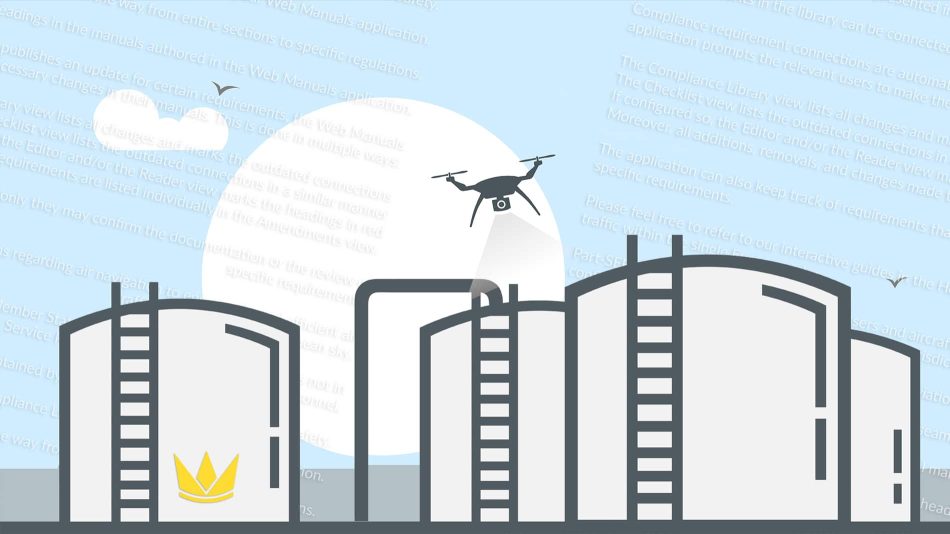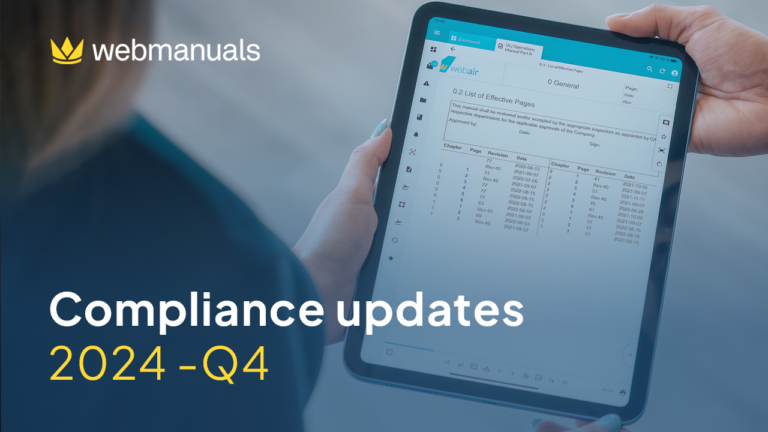The drone age is upon us, yet, last year’s market predictions were lower than expected. Some blame it on regulatory limitations, others on insufficient technology and a few on the roaring pandemic.
Luckily, with more readily available technology, improved regulatory processes and educational content – like this one – FAA’s BVLOS waivers are here to make the drone industry go above and beyond market predictions this year, even with the pandemic trying to hold us back.

The Benefits of the BVLOS Waiver
The benefits of going for the holy grail of Part 107 waivers, the Beyond Visual Line of Sight § 107.31, are straightforward and many. An approved BVLOS waiver enables:
- Complex operations
- Better data collection
- More flexibility in scope
- Cost-effective operations
- Little to no human interactions
- Fewer deployment
- Greater distances covered
- Competitive operations
- Better services
- Marketing opportunities
One can expand and talk about the benefits of BVLOS waivers for ages but most likely if you are reading this, you are already convinced of its divine benefits. So let’s jump to the important stuff – how to go about actually getting a Part 107 BVLOS waiver.
In 2019, 1200 BVLOS waivers were submitted for review and 99% of them failed to earn a permit. That will say, obtaining a waiver is not easy and requires subject matter experts dedicated to the BVLOS waiver application.
Web Manuals work with over 350 operations in all corners of our global airspace and one thing we can assure is that compliance management is nothing to be taken lightly, no matter the segment.
10 Steps Towards BVLOS Waiver Approval
To help you along the way – Web Manuals give you 10 valuable steps to increase your chances of receiving approval when preparing your BVLOS waiver application:
1. Introduce concept of BVLOS operations
First of all, you need to have a clear understanding of beyond visual line of sight procedures before even starting to think about the regulatory challenges.
How will my operations be able to operate beyond visual line of sight? And why is it important for my drone operations? What will I accomplish with my beyond visual line of sight operations?
When you introduce your concept of operations, remember to be clear and precise in your intent and purpose of operations. No BVLOS operations are alike the other, which is one of the reasons why these approvals are particularly hard to obtain.
2. Outline BVLOS operational description
Once you have defined the introductory concept of operations, you will have to start outlining more specific operational descriptions. These descriptions will include everything from command and control links to emitters performance capabilities.
For example, you would have to state max range and accordingly demonstrate that the Command and Control can operate within range. You will also have to take into account the environmental and geographic factors, with a focus on terrain.
3. Develop a flight operations manual
After the introductory work is complete, start developing and write a FOM, also known as Flight Operations Manual (much like the one for manned aviation).
This often takes longer than expected, considering document formatting and revision tracking. Luckily, our editor takes away the hassle of manual authoring and our reader makes it easier than ever to review the manuals by roles.
Some common sections of the Flight Operations Manuals include:
- Flight planning, preparation procedures
- Take-off/launch procedures
- In-flight control and system monitoring capabilities
- Land and recovery procedures
As well as the more in-depth information outlined in the next 5 sections…
4. Set up pilot qualifications, training and experience
Set up training and qualification requirements for pilots and other participants, such as the visual observer and second in command.
Here is where most people fail in their application. According to the FAA’s latest BVLOS waiver approval trend analysis, make sure to provide means for validating effectiveness of employee training in order to get approved. That means listing all courses and subjects covered in the training. Additionally, show proof that the employees received 100% on training quizzes, at least after corrective measures.
Luckily, Web Manuals has an awesome quiz feature when distributing manuals. By setting up a quiz checkout of your manuals you ensure your pilots can take quizzes from anywhere and you can report these numbers to the FAA in an agile and controlled way now and for all future revisions.
5. Describe operating environment
The next step is to very clearly define the operating environment. Arguably, this could be the most important part of a beyond visual line of sight waiver application. You would have to describe if you intend to operate rural or remote areas, the population and, of course, weather conditions. It is imperative that you acknowledge meteorological parameters and limitations to ensure safe flight operations.
According to the approval trend analysis, include details on when/how/what weather conditions will be gathered in combination with limitation on wind speed from the manufactured UAS to maximize your chances of receiving the BVLOS waiver approval.
6. Describe systems
Remember, flight control and navigation systems are more important than the unmanned aerial systems platform. Regulators are more interested in your systems’ risk mitigation than extraordinary system capabilities.
With that said, these descriptions should focus on:
- Navigation
- Communications
- GCS
- GPS
- Engine failure
- Redundancies
7. Apply methodology to identify operational hazards
Now, to the most robust part of your BVLOS application. In order to receive approval, you must apply a specific methodology to identify operational risk.
There are several methods for risk assessment. Our European partner AirHub specializes in Specific Operational Risk Assessment (SORA), a well-recognized methodology for UAS risk assessment.
The risk methodology should be applied to identify operational hazards in the following areas:
- Personnel
- Environment
- Systems
8. Describe each hazard in a risk matrix
Accordingly, every identified hazard needs to be thoroughly analyzed and include the following conclusions:
- Causes
- Likelihood
- Severity
- Effects
- Mitigations
All of these should be presented in a risk matrix, much like the one in the SMS manual for manned aviation.
9. Summarize findings and present risk assessment
Once all risk is identified, analyzed and mitigated, conclude your application by summarizing findings in a clear and concise way. In order to be compliant, you need to be able to explain:
- Initial risk
- Mitigated risk
- Residual risk
The residual risk, meaning the remaining risk after mitigation, should only consist of risk that cannot be eliminated in any way. Only then would you receive a BVLOS waiver approval.
10. Apply via the FAA’s public website
Once all other steps have been completed, all information has been collected and presented neatly, the last step is to submit your application via the FAA’s public website.
When you have applied, expect the following steps:
- Get a applicant reference number
- Assigned to waiver team
- Waiver analysis
- Team recommendation
- Management Review
- Issuance of Results
All post results are publicly available on the website. One of the most important things before even starting the steps towards BVLOS approval is to look at previously approved and failed waivers. That is the best way to find out what the regulators are looking for and what to expect in terms of complexity and quality.
Management Systems for BVLOS Operations
Documentation is not an easy game, and neither is regulations. With the unmanned advancing, the importance of document management and management systems becomes exponentially more important.
During the last years, we have supported some of the first Part 135 drone operators in their compliance management, attended numerous drone conferences around the world to educate ourselves in evolving drone regulations and focused efforts on optimizing our product suite to support drone operations:
Stay on top of the game! Book a demo below to find out more.




